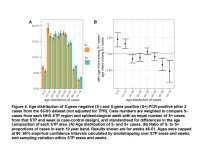Apologies if this has been discussed already, I don’t check this thread often and it is a long read.
So it seems I won some kind of government’s Free Covid Test raffle, as I recently got a letter from the NHS telling me I’ve been picked up at random from their database to participate in a mass test exercise, and asked if I wanted to take part. I thought might as well do it, and sure enough today the home kit came through the post.
The thing is, you’re supposed to use it and send it back right away, regardless of whether you have symptoms or not. The test doesn’t check for antibodies either, so it won’t provide any useful statistics to the government there.
Unless I had by amazing coincidence contracted Covid in the last week, the test will of course be negative. As will for the immense majority of the rest of the participants in this exercise, I would wager. It seems a bit of a waste of resources to ask symptom-free people to test themselves for research, no?









